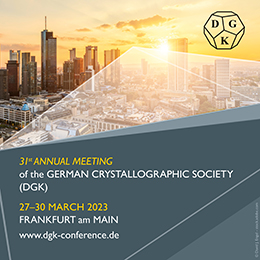


Outreach
From a local to a national Vietnamese Crystal Growing Competition
![Thumbnail [Thumbnail]](https://www.iucr.org/__data/assets/image/0020/155423/thumbnail.jpg)
The Vietnamese Crystal Growing Competition (V-CGC) was initiated in 2014 as part of a collaboration between the chemistry departments of KU Leuven and Hanoi National University of Education and funded by VLIR-UOS (Belgium). Initially, the competition concentrated on the region of Hanoi, but in 2019 the initiative was extended all over Vietnam as one of the work packages of the MOMA project “Research-based curriculum development in molecular and materials sciences Vietnam” funded by the Erasmus+ program of EACEA.
Many schools participated in the IUCr Crystal growing competition launched in 2014 as part of the celebrations for the International Year of Crystallography. From 2016 to 2019, Vietnamese teams won several silver medals and a gold medal in 2018. During the COVID-19 pandemic, while the international competition was temporarily halted, the Vietnamese competition was successfully organized locally. The V-CGC is open to all school children from 11 years up to and including undergraduate students, divided into two groups of under and over 15 years. There are two categories: growing a single crystal and a video clip competition. The same guidelines as for the IUCr competition are used for the judging of the entries.
![[Group]](https://www.iucr.org/__data/assets/image/0010/155773/Fig4sharp.jpg) Laureates, their teachers and the organizers at the grand ceremony of the Vietnamese Crystal Growing Competition in the period 2019–2022.
Laureates, their teachers and the organizers at the grand ceremony of the Vietnamese Crystal Growing Competition in the period 2019–2022.
During the difficult period of the pandemic, we have learned and achieved a lot. Vietnam is a rapidly developing country but has many schools in remote areas where learning conditions are minimal. The opportunity for their school children to conduct scientific experiments is relatively rare. Fortunately, thanks to the crystal growing competition, they can start with very simple everyday tools (such as a cup, a spoon, a piece of cardboard, a wire etc.) and a very popular substance in the local market, namely alum. After a short introduction to crystals and crystallization, the children can get started quickly with the help of their teacher. The interesting thing about the crystallization of alum is that it is easy to obtain a small single crystal, but it is more difficult to obtain a larger single crystal. Therefore, these experiments are suitable for both the novice and the experienced experimenter. The children work together at school (or online), familiarizing them with soft skills such as group work, problem-solving and communication skills. In addition, research skills and self-learning are further developed. For the latest round in 2022, the V-CGC welcomed 120 entries (for both categories together) from 110 participating groups coming from 38 schools. On 15 September 2022, a prize awarding ceremony was held in Quy Nhon, where the laureates (and their teachers) of the 2019–2022 editions were honored. Some crystals made by Nguyen Duc Thang, one of the laureates of the V-CGC 2021–2022, are shown below.
![[Crystals]](https://www.iucr.org/__data/assets/image/0009/155772/crystals.png) From left to right: crystals of chromium potassium sulfate (chrome alum), potassium dihydrogen phosphate with green food dye and potassium dihydrogen phosphate with copper sulfate (5–10% m/m).
From left to right: crystals of chromium potassium sulfate (chrome alum), potassium dihydrogen phosphate with green food dye and potassium dihydrogen phosphate with copper sulfate (5–10% m/m).
More information is available here.
Copyright © - All Rights Reserved - International Union of Crystallography









